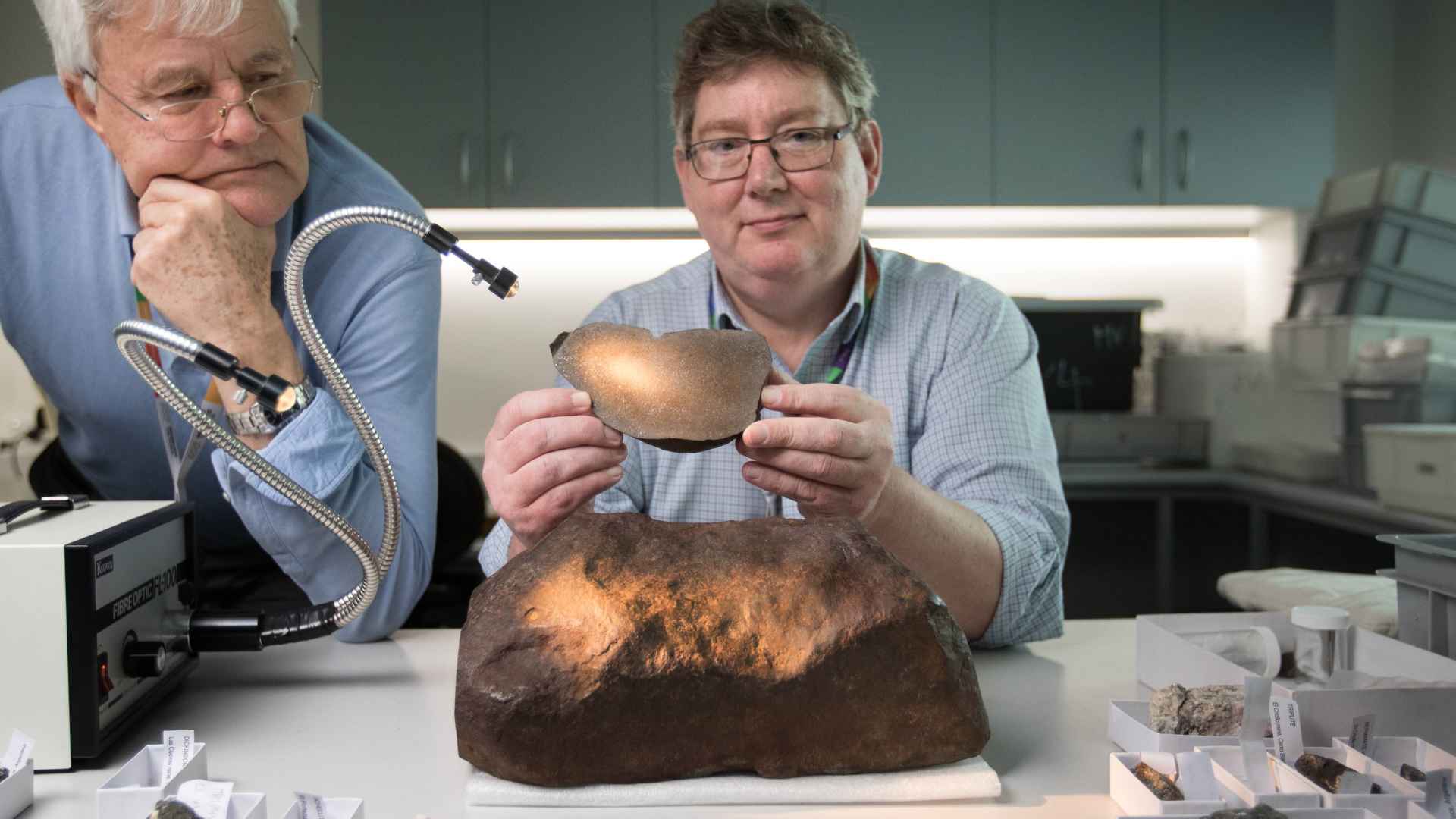It sounded like the ultimate lucky break: a heavy, rust‑red rock found in the fabled Maryborough goldfields that surely had to be precious metal. Instead, it became an even bigger story—and a scientific jackpot—for hobby prospector David Hole.
Ever wondered how you’d react if your metal detector beeped over something heavy? In 2015 Hole took the rock home, attacked it with saws, grinders, drills and even acid, but nothing pierced its tough shell. When brute force failed, he hauled it to Melbourne Museum, and that’s where the real sparkle emerged.
What sparked the discovery in a legendary Australian goldfields region
Maryborough, once the heart of Victoria’s nineteenth‑century gold rush, is still scoured by treasure hunters. Hole’s find weighed 37 lb and sat in yellow clay just like many nuggets of old. “It looked sculpted, almost aerodynamic,” he recalled—clues that quietly shouted “meteorite” to trained eyes.
Dermot Henry, a museum geologist who has inspected thousands of “space rocks,” needed only minutes to spot the tell‑tale thumb‑print pits created during fiery atmospheric entry. Of the countless backyard samples he’s studied, only two proved genuine meteorites; Hole’s was one of them. Pretty amazing, right?
Museum experts reveal an ancient 4.6‑billion‑year‑old H5 chondrite space traveler
Scientists sliced a wafer from the core and identified an iron‑rich H5 chondrite formed when our solar system was still a dust cloud. Carbon dating places its earthly touchdown between 100 and 1,000 years ago. Key facts at a glance:
- Age: roughly 4.6 billion years
- Weight: 37 lb (16.8 kg)
- Type: H5 ordinary chondrite rich in iron and nickel
- Provenance: likely knocked from the asteroid belt between Mars and Jupiter
Why a meteorite’s scientific treasure outweighs any gold nugget you could find? Below is a quick comparison:
| Feature | Typical gold nugget | Maryborough meteorite |
|---|---|---|
| Age | tens of millions of years (Earth‑formed) | 4.6 billion years (pre‑solar‑system) |
| Composition | almost pure gold | iron, nickel, silicates, “stardust” grains |
| Core value | jewelry & investment | planetary history, organic chemistry clues |
So, would you trade a chunk of cosmic history for a pocketful of gold? Scientists argue meteorites are priceless time capsules, revealing how planets form and where life’s building blocks originate. For researchers—and now Hole—the story inside the stone matters far more than any glitter on its surface.
If you stumble onto an odd, heavy rock, think twice before reaching for the hammer. A patient museum visit might unlock a narrative that began before Earth itself. Treasure, after all, isn’t always measured in karats.

